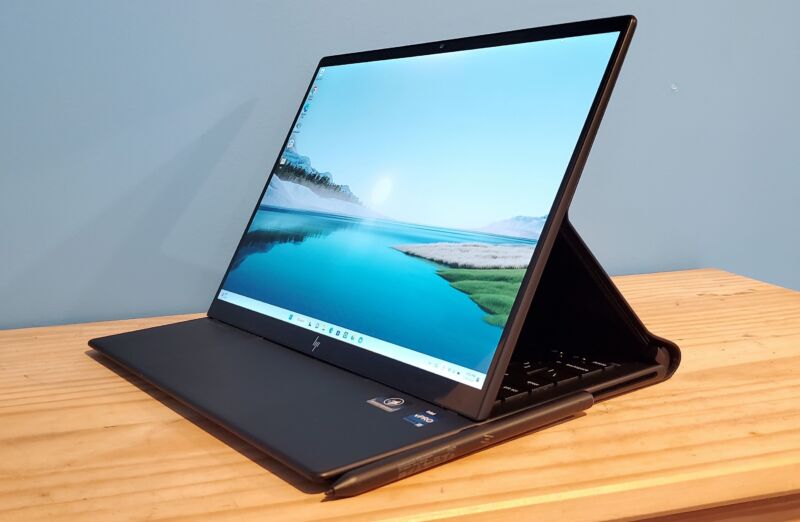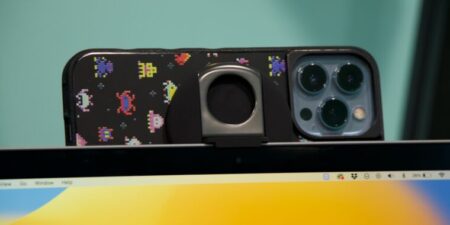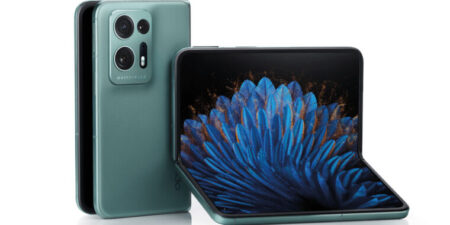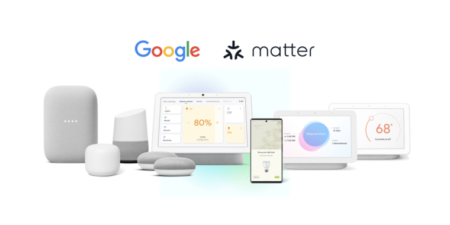
Sharon Harding
| Specifications at a glance: HP Dragonfly Folio G3 | |||
|---|---|---|---|
| Worst | Preferably | How reviewed | |
| Screen | 13.5 inch 1920×1280 IPS touch screen | 13.5-inch 1920×1280 IPS touchscreen with HP Sure View Reflect Privacy | 13.5 inch 1920×1280 IPS touch screen |
| operating system | Windows 11 Home | Windows 11 pro | |
| CPU | Intel Core i7-1255U vPro | Intel Core i7-1265U vPro | |
| R.A.M. | 16GB LPDDR5-6400 | 32GB LPDDR5-6400 | 16GB LPDDR5-6400 |
| storage | 512GB NVMe PCIe 4.0 x4 SSD | 1TB NVMe PCIe 4.0 x4 SSD | 512GB NVMe PCIe 4.0 x4 SSD |
| Networking | WiFi 6E, Bluetooth 5.2 | WiFi 6E, Bluetooth 5.2, 5G | |
| ports | 2x Thunderbolt 4, 1x 3.5mm | 2x Thunderbolt 4, 1x 3.5 mm jack, 1x Nano SIM card reader | |
| size | 11.67 × 9.22 × 0.7 inches (296.42×234.19×17.78mm) |
||
| weight | Starting at 1.4kg (3.09lbs) | ||
| battery | 53Wh | ||
| warranty | 1 year | ||
| Price (RRP) | $2,379 | $4,715 | $2,749 |
| Miscellaneous | Stylus included with 3x extra tips | ||
Imposingly dressed, the HP Dragonfly Folio G3 is a unique device with a price tag to match (it starts at $2,379 at press time). Like other Dragonfly laptops, including the HP Elite Dragonfly Chromebook and Elite Dragonfly G3, the Folio G3 is primarily aimed at business users. But that’s not the kind of 2-in-1 that IT managers will be deploying across the enterprise.
Instead, the Folio G3 will end up in the hands of executives and budget-conscious power users willing to splurge for distinctive looks and far more flexibility than almost any other convertible PC out there. With its current-gen CPU, this device is an intriguing alternative to Microsoft’s Surface Laptop Studio, which features a screen with a similar pull-forward design that allows it to rest on the deck or rest on the keyboard to look like a tablet to function.
HP’s Folio G3 is finely crafted, staying cool and quiet and begging to be shown off. However, if you prioritize performance over things like pen input and an adjustable screen, there are more suitable ultralight laptops.
Faux leather, real flexibility
Few things feel more unnatural than accidentally pressing keys on a convertible laptop when the screen is curved back in tablet mode. That’s pretty hard to avoid, however, since most 2-in-1s rely on a 360-degree hinge that allows the bottom of the lid and the bottom of the deck to meet. As tedious as it sometimes feels to flip the Folio G3’s lid, the computer’s pull-forward design makes the device much more enjoyable to use.
-
It makes for a crazy profile, but the design has its perks.
Sharon Harding
-
The more traditional look of the PC.
Sharon Harding
When you firmly push back the lid of the open laptop, the display is released from the powerful magnets that attach it to the deck. You can then easily and reliably pull the screen forward and rest it on the deck, covering the keyboard but leaving the exquisitely smooth and deep touchpad exposed. Or you can pull the screen further down until its bottom touches the top of the keyboard, creating a tablet experience.
PCs like the Surface Laptop Studio and Acer’s ConceptD Ezel 7 and 3 have worked to make this form factor a thing. HP’s version of the design has a luxe twist on the past: leather-like materials.
HP first tried to woo us with laptops with leather lids when it introduced the Specter Folio in 2018, but switched to synthetic leather with its successors, the 2021 Elite Folio and the Folio G3. HP is apparently trying to find a home for its leather-like, ultra-flexible convertible design. But how attached should HP really be to this leather-to-leatherette dream?






